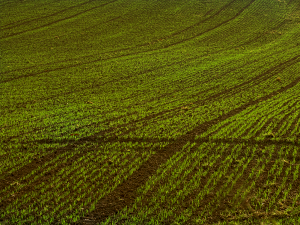 Manitoba Agriculture
Manitoba Agriculture
Crop Report
June 28, 2022
Northwest Region
Unsettled weather arrived over the weekend after a few nice growing days, bringing as much as 100 mm rain in the McCreary area, lessening towards Laurier and Ste. Rose. Fields in that region are again underwater, after being some of the driest in the region in 2021. Unseeded acres are approximately 50-60% of total arable land in this district, while the region overall has 89% of crops planted. Unseeded acres also remain in the Grandview-Gilbert Plains-Dauphin districts (15 to 30%), and the Fork River area (30%).
Overnight lows are still dipping below 10°C, crops require more heat to achieve rapid growth. A severe storm system moved through late last week, with baseball-sized hail destroying some crops in the Binscarth area, together with a tornado touchdown. Benito-area crops are being assessed for damage from the previous storm, with some crops recovering with further maturity delays expected.
Provincial Overview
A number of fields in the Southwest region were seeded post-June 20th, leading to a small increase in planted acres. Some of these areas were low spots that could now be seeded, but most have been seeded via a floater, to either canola or greenfeed/cover crop.
Severe weather and heavy rains have damaged crops in parts of agro-Manitoba, notably in the Southwest and Northwest regions, where up to baseball-sized hail destroyed crops and damaged farm infrastructure near Binscarth and Russell. Crop recovery from last weeks’ storm in the Northwest region was evident, but crops are expected to be delayed as a result.
Continually wet soils have slowed seeding and spraying progress again. There were over 880,000 acres left unplanted as of June 20 seeding deadline, concentrated in the northwestern Interlake, along Lake Manitoba, in the Austin-Gladstone-Portage la Prairie area, and adjacent to the Red River. However, seeding post-insurance deadline has resulted in over 150,000 acres being planted, mostly in the Southwest region, bringing the unseeded acreage estimate down to just under 700,000 acres.
Repeated rains and warm soils have led to widespread nitrogen fertilizer losses, either via leaching or denitrification. In-crop nitrogen-deficiency symptoms are showing up as chlorotic (yellowed) leaf margins, in combination with other symptoms of crop stress due to saturated soils. A drop in nitrogen prices (down approx. 30% from spring highs) may encourage in-crop top-dressing. The rush to seed crops wherever possible led to poorer seedbeds in some cases, which will impact in-season management and harvested yields.
Ag retailers are dealing with short-supply issues of glufosinate (Liberty) herbicide, and short-season crop seed. Short-season seed is either destined to be a reseed or uninsurable late-seeded grain (barley) or forage (millet, sorghum) crop. Spraying progress has rapidly advanced, despite challenging winds and very wet fields. Aerial application is widespread for insect control, while ground sprayers attempt to manage weeds. Rutted fields and stuck sprayers are common this year, and most spraying has had to be done in the evenings or early mornings when winds are calmer. Many canola fields have yet to be sprayed for the first time, and weed pressure is high.
Humid and warm conditions are ideal for fusarium and sclerotinia (white mould) disease development this year, and many farmers and retailers are preparing to spray fungicides on wheat, canola, and peas (for mycosphaerella) when conditions permit and crop development advances.
